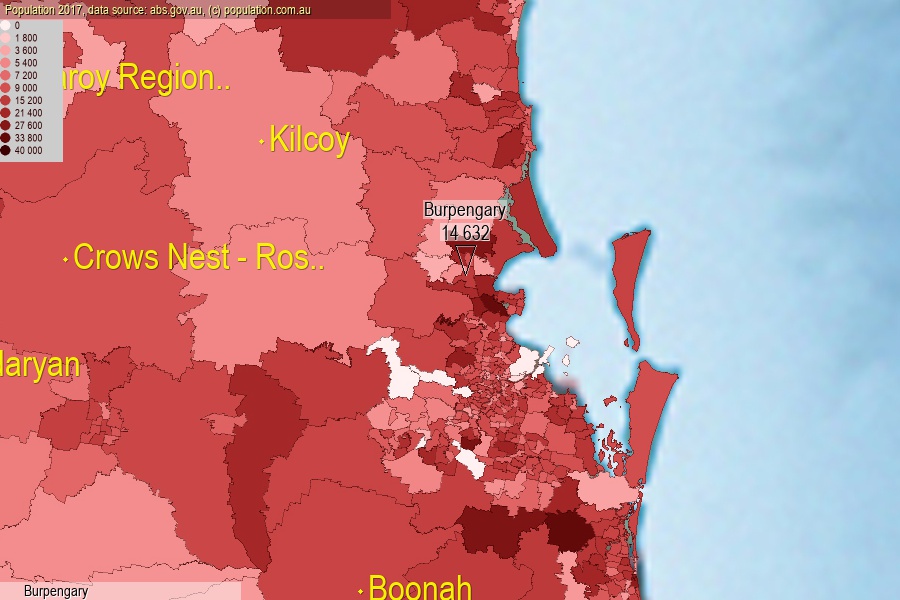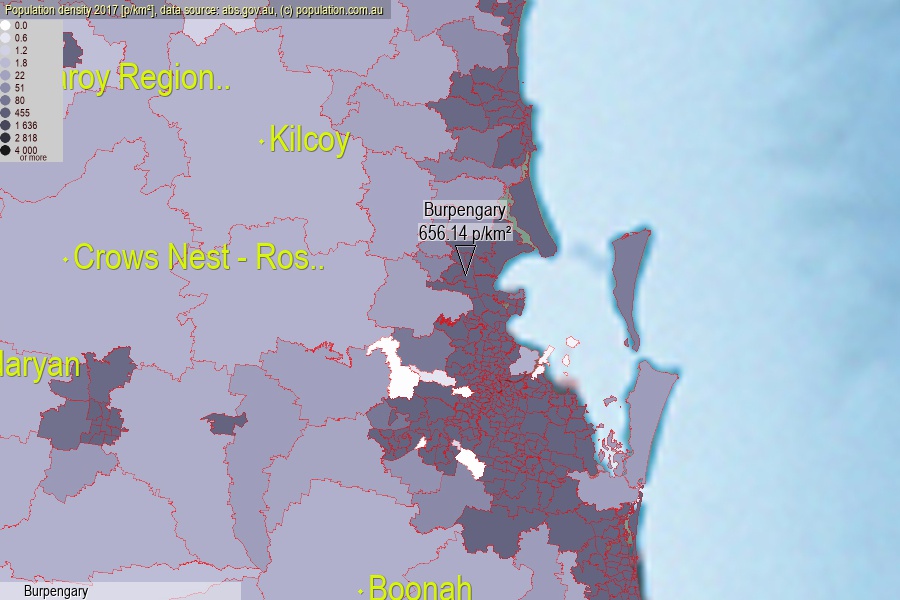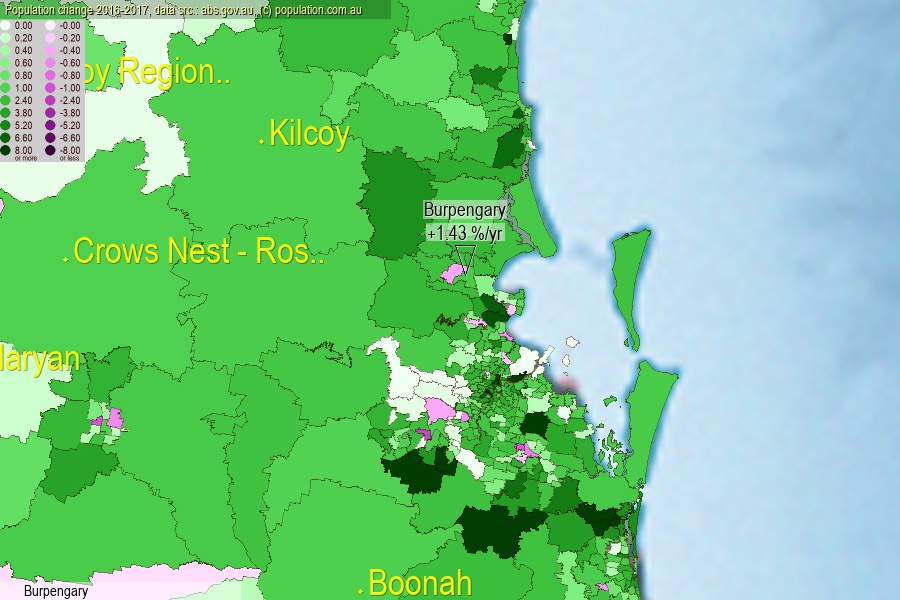 population.com.au
population.com.auLast official estimated population of Burpengary (as Statistical Area Level 2) was 14 632 people (on 2017-06-30)[2]. This was 0.06% of total Australian population and 0.293% of QLD population. Area of Burpengary is 22.30 km², in this year population density was 656.14 p/km² . If population growth rate would be same as in period 2016-2017 (+1.43%/yr), Burpengary population in 2025 would be 16 390. [0]



Click to enlarge. Burpengary is located in the center of the images.
Population [people], population density [p./km²] and population change [%/year] [2]
View borders » (new window) [4]
[1991-1992] +21.03 %/Yr.
[1992-1993] +17.84 %/Yr.
[1993-1994] +14.56 %/Yr.
[1994-1995] +10.02 %/Yr.
[1995-1996] +5.45 %/Yr.
[1996-1997] +3.19 %/Yr.
[1997-1998] +2.59 %/Yr.
[1998-1999] +2.35 %/Yr.
[1999-2000] +2.32 %/Yr.
[2000-2001] +1.26 %/Yr.
[2001-2002] +1.44 %/Yr.
[2002-2003] -0.09 %/Yr.
[2003-2004] +2.00 %/Yr.
[2004-2005] +1.56 %/Yr.
[2005-2006] +1.50 %/Yr.
[2006-2007] +0.17 %/Yr.
[2007-2008] +3.03 %/Yr.
[2008-2009] +2.25 %/Yr.
[2009-2010] +3.09 %/Yr.
[2010-2011] +1.19 %/Yr.
[2011-2012] +1.38 %/Yr.
[2012-2013] +0.29 %/Yr.
[2013-2014] +1.36 %/Yr.
[2014-2015] +2.49 %/Yr.
[2015-2016] +2.36 %/Yr.
[2016-2017] +1.43 %/Yr.
[0] Calculated with linear interpolation from officially estimated population
[1] Read more about SA2 and Australian Statistical Geography Standard (ASGS) on abs.gov.au
[2] Population data from Australian Bureau of Statistics (Population and density: 2017; change: 2016-2017)
[3] Digital Boundaries: Australian Statistical Geography Standard (ASGS) 2016.
[4] Border coordinates are simplifyed using Ramer-Douglas-Peucker algorithm.